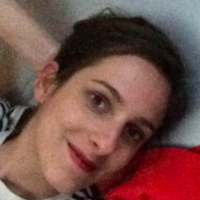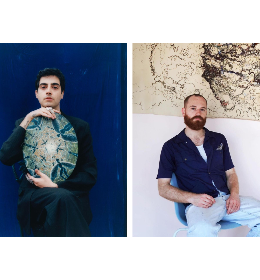A challenge for the artists
This invitation represents an opportunity for artists to take up a challenge: to communicate and interact with historical sites of great cultural worth — whilst reigniting their contemporary significance.
German artist Rainer Gross has definitely accepted the challenge with his installation Pas perdus. Located at the Castle of Carcassonne, Gross has chosen to install his work, co-produced by IN SITU and the Center des Monuments Nationaux, in the “Cour du Midi” — restoring, both in a conceptual and structural way, the great hall of apparition of the thirteenth century, which is no longer there today. Using a self-supporting structure that stands intertwined with the castle’s façade, Gross is able to skillfully highlight the monumental size and presence of the space.
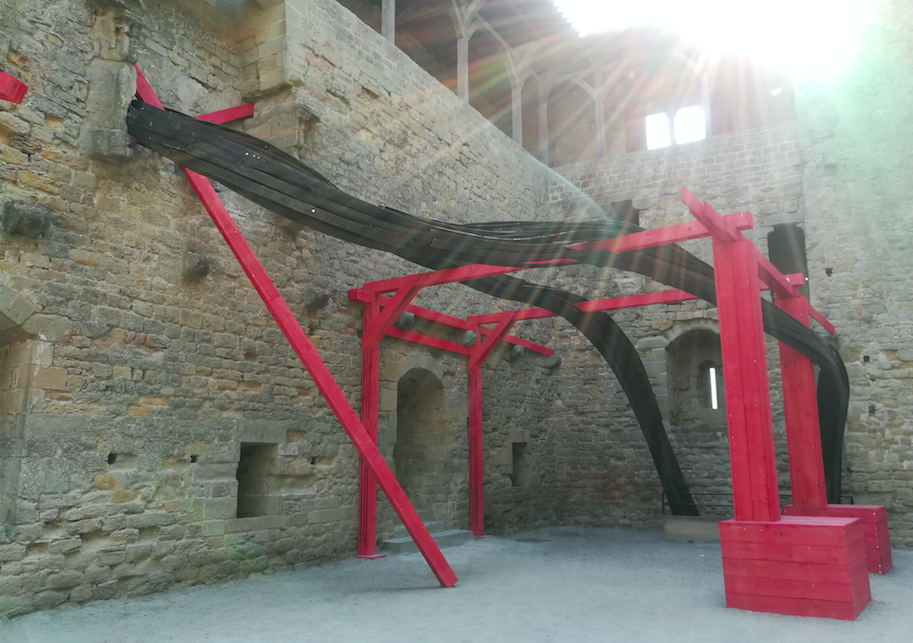
Rainer Gross, Pas perdus, 2017, production IN SITU - CMN, Château de Carcassonne, Cour du midi
Claude Viallat’s installation, occupying the Palace of the Archbishops of Narbonne, aims to blend in with the space, creating a formal dialogue with the works on show at the Museum of Art and History. Viallat’s research on the nature of decorative art, which he begun in 1969 with the creation of Surface-Support, takes on its full meaning in the orientalist rooms. Here, Viallat’s work seems almost sober, delicately scattered around the room. The artist, based in Nîmes, has participated in IN SITU once before — back in 2014, where he installed a work in the Cabrières-Sabatier d'Espeyran Hotel.

Claude Viallat, 2015-2017, Palais des archevêques, Salles orientalistes
A successful symbiosis of old and new
What is at stake at IN SITU is the creation of a dialogue between ancient and contemporary art — executed with finesse by Jaume Plensa, whose work is installed in the Cistercian Abbey of Fontfroide, built in the 12th century. Nestled within the walls of the chapterhouse, Plensa’s Sanna stands elegantly poised under the elongated arcs of the Gothic vaulted ceiling. The anamorphic bronze sculpture, painted white, represents a fine female face, with eyes closed — resonating perfectly with spiritual tranquility of the place. The work is one of a series of sculptures, titled White Forest. They recall both the spirituality of the Buddhas of Angkor, and the timelessness of the sleeping Muse by Constantin Brancusi — evoking an inner peace and a deep silence, perfectly appropriate for the place.
On the contrary, Nick Ervinck’s polyester sculpture APSAADU stands in stark contrast to the weathered facade of the Château de Foix, built around the year 1000. Made using a 3D printer, Ervinck’s three-meter-high sculpture recreates macrophotographic images of water splashing — appearing fluid, organic and anthropomorphic. Here, Ervinck plays with the concept of time in the confrontation of nature with technology; the ancient with the modern; the virtual with the real.
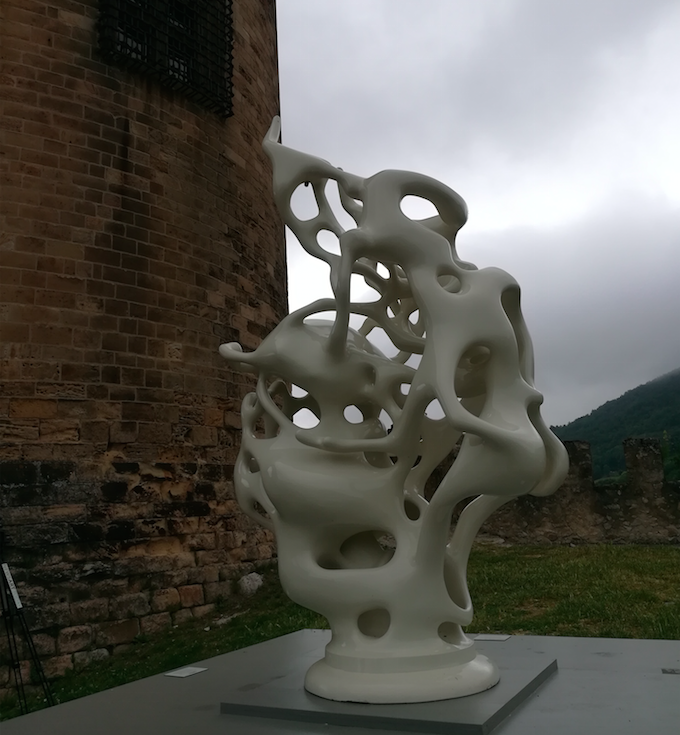
Nick Ervinck, APSAADU, 2012-2013, Château de Foix
The journey laid out by IN SITU allows its audience to settle for a moment — to become immersed in the Occitan lands. The 11 stops along the route, however, blur our spatio-temporal understanding of the long-established historical and cultural landmarks of Occitania by inviting us to live art differently.
The title of the event, IN SITU, translates from Latin as "in its (original) place or position — on site." This is significant — even those artworks, such as those by Nick Ervinck or Jaume Plensa, brought to the space resonate well in their specificity as those constructed “on site.” Christian Bencard's Ombres de suie, Partition bénédictine, produced over several days in the ancient dormitories of the Lagrasse Abbey, particularly picks up on this. Ephemeral by nature — created using heated neoprene glue, the painting will not exist for more than 6 months — this work will leave only a momentary imprint on its space. However, it stands as a pertinent reflection, and highlights the relevance of IN SITU's approach — a meeting of old and new that questions our perception of time.
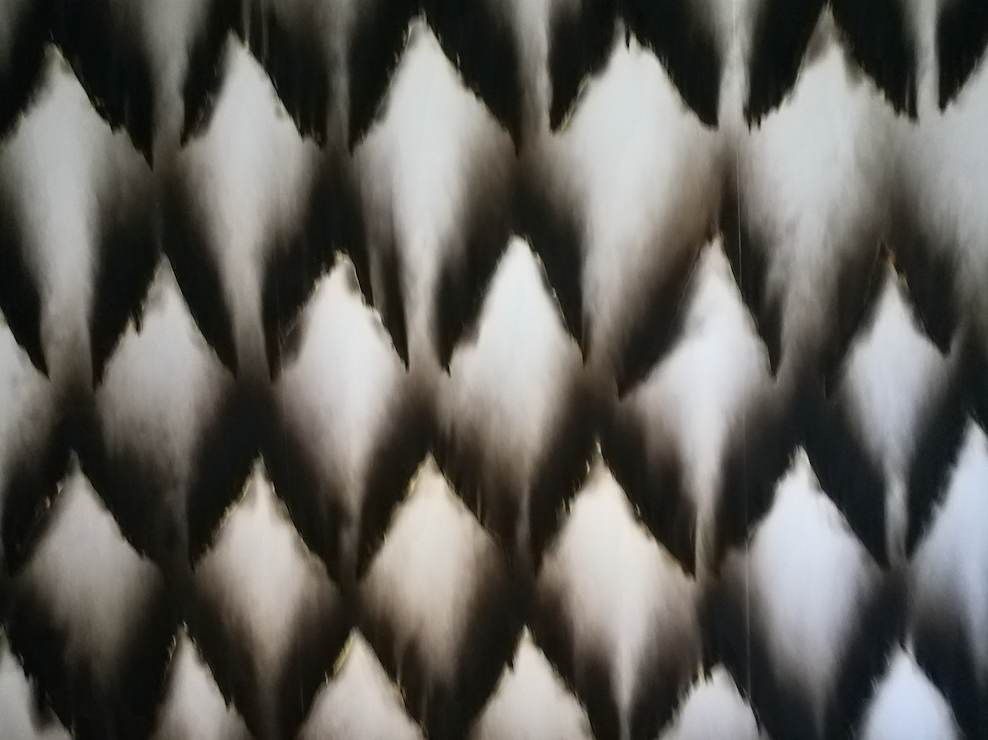
Christian Jaccard, Ombre de suie, Partition bénédictine, 2017, production IN SITU, Abbaye de Lagrasse, Dortoir



